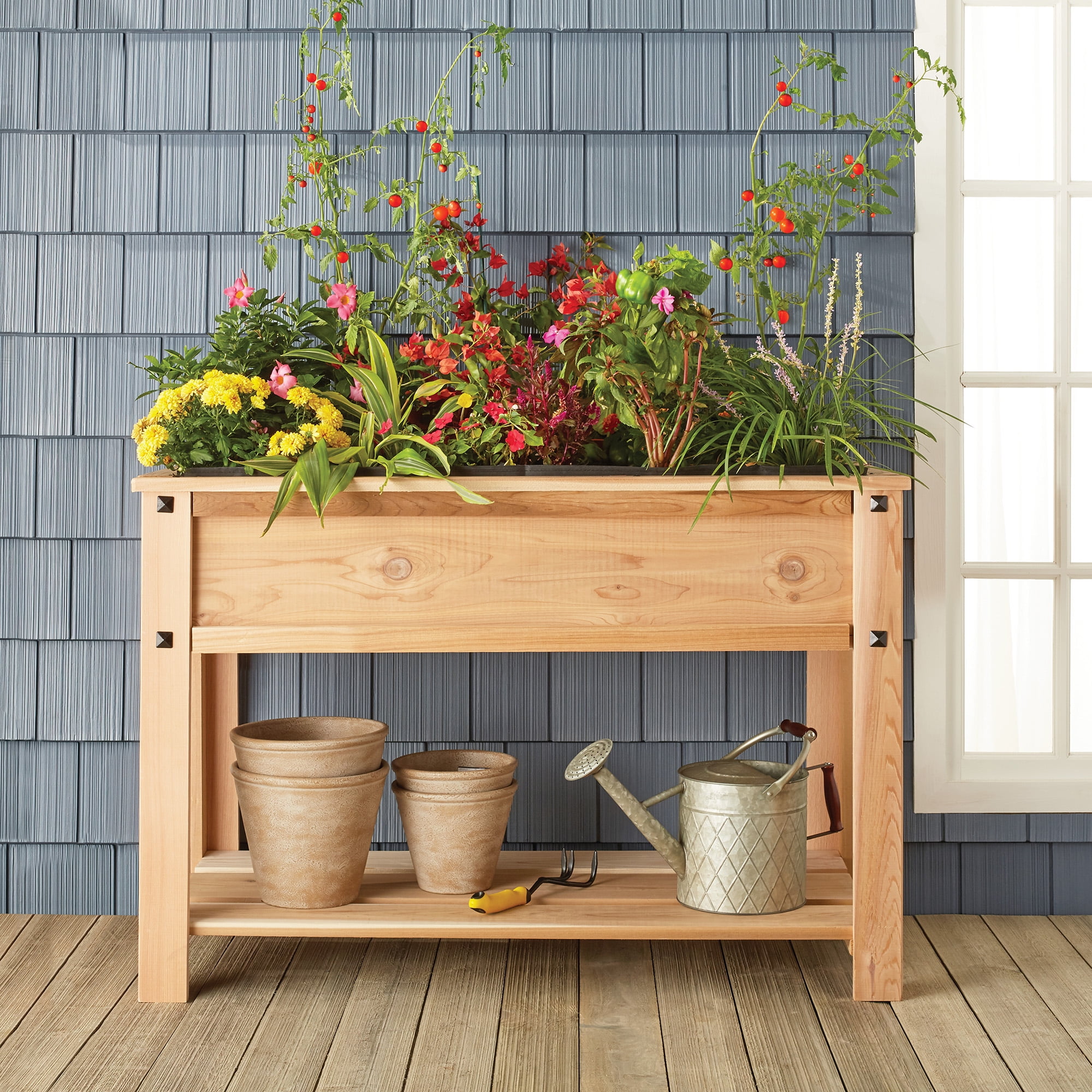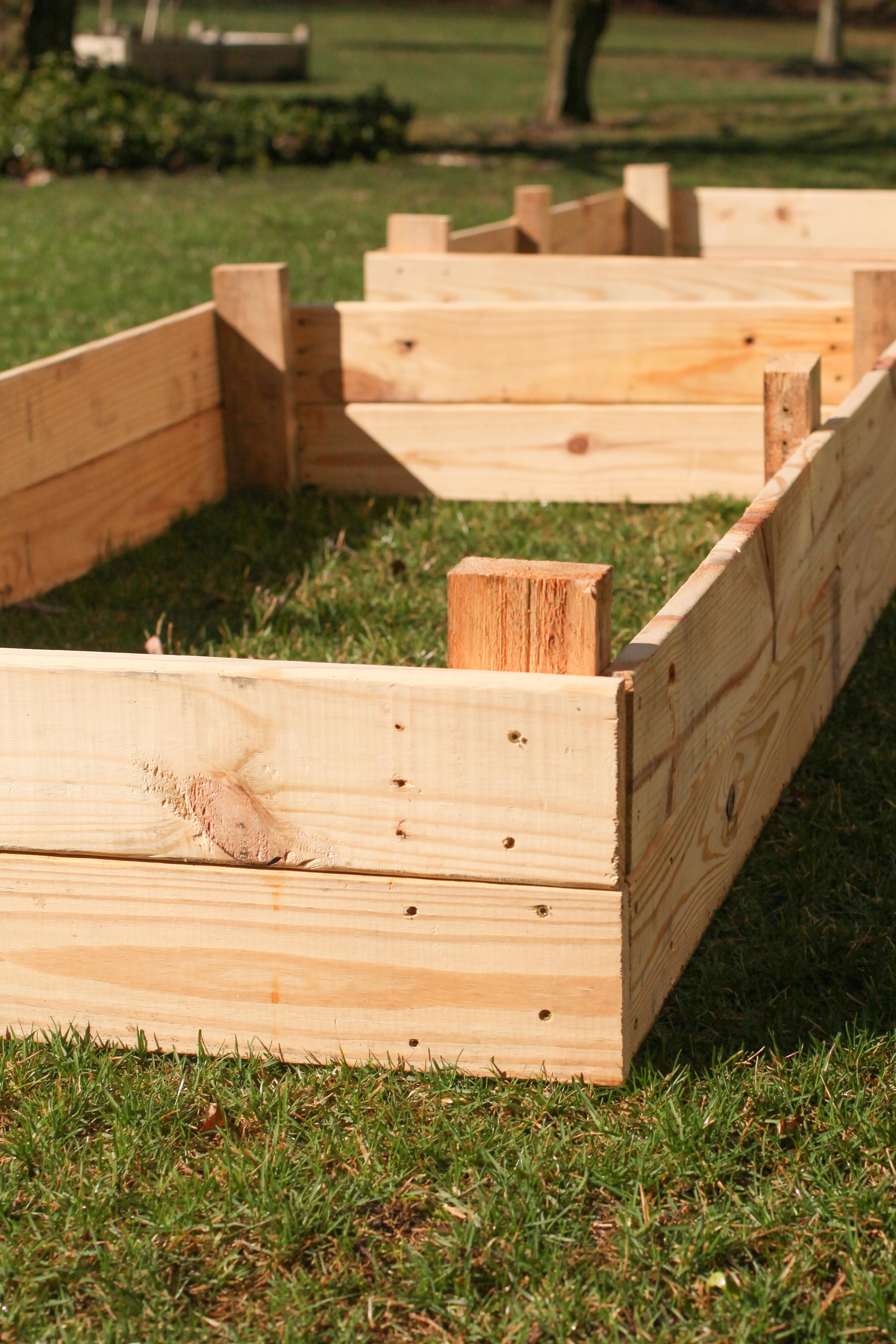Better Homes And Garden Raised Garden Bed: The Complete Guide
Better Homes and Garden Raised Garden Bed: The Complete Guide
Introduction
Growing your own food is a rewarding experience, but it can also be challenging. If you have poor soil, limited space, or difficulty bending and kneeling, a raised garden bed may be the perfect solution for you.
A raised garden bed is a container that is filled with soil and raised above the ground. This has several advantages over traditional gardening, including:
- Improved drainage: Raised beds drain more quickly than in-ground gardens, which helps to prevent root rot and other diseases.
- Easier access: Raised beds are easier to reach, which is especially important for people with limited mobility.
- Better soil quality: Raised beds can be filled with a high-quality potting mix that is specifically designed for growing plants. This results in healthier plants and a bountiful harvest.
- Less pests and diseases: Raised beds are less likely to be affected by pests and diseases than in-ground gardens. This is because the soil is warmer and drier, which makes it less hospitable to pests and diseases.
If you're thinking about adding a raised garden bed to your yard, this guide will provide you with everything you need to know to get started.
Main Content
Choosing the right location
The first step is to choose the right location for your raised garden bed. You'll want to find a spot that gets at least six hours of sunlight per day. The soil should also be well-drained. If your soil is poor, you may need to amend it with compost or other organic matter.
Building the raised bed
There are many different ways to build a raised garden bed. You can use wood, bricks, concrete blocks, or even old tires. The size of your bed will depend on how much space you have and how much you plan to grow. A good rule of thumb is to make each bed at least 3 feet wide so that you can reach the middle without stepping inside.
Once you've chosen your materials and built your bed, you're ready to fill it with soil. You'll need a high-quality potting mix that is specifically designed for growing vegetables.
Planting your garden
Once your bed is filled with soil, you can start planting your seeds or seedlings. Be sure to follow the planting instructions that come with your seeds or seedlings.
Caring for your garden
Once your garden is planted, you'll need to water it regularly, especially during hot, dry weather. You'll also need to fertilize your plants every few weeks.
You may also need to control weeds and pests. Weeds can be pulled by hand or removed with a hoe. Pests can be controlled with natural methods such as insecticidal soap or neem oil.
Harvesting your crops
When your plants are ready to harvest, simply cut them off at the base of the stem. Be sure to harvest your crops regularly so that they don't go to waste.
Conclusion
Growing your own food in a raised garden bed is a rewarding experience. With a little planning and care, you can enjoy fresh, healthy produce all season long.
Are you looking for a high-quality raised garden bed that will help you grow your own fresh fruits and vegetables? If so, you should check out the Better Homes and Garden Raised Garden Bed. This bed is made from durable cedar wood that is weather-resistant and will last for years to come. It is also easy to assemble and can be customized to fit any size or shape of space.
In addition to its high-quality construction, the Better Homes and Garden Raised Garden Bed also has a number of features that make it ideal for growing plants. The raised design helps to improve drainage and aeration, which is important for healthy plant growth. The bed also has a built-in water reservoir that helps to keep the soil moist, even during hot, dry weather.
If you are serious about gardening and want a raised garden bed that will give you years of use, then the Better Homes and Garden Raised Garden Bed is the perfect choice for you. To learn more about this bed and to see all of its features, please visit Garden Wiki.
FAQ of better homes and garden raised garden bed
Here are the 5 most frequently asked questions about Better Homes and Garden raised garden beds, along with valuable insights and solutions:
- What are the benefits of using a Better Homes and Garden raised garden bed?
There are many benefits to using a Better Homes and Garden raised garden bed. First, raised beds can help improve drainage and aeration, which can lead to healthier plants. Second, raised beds can help reduce pests and diseases, as they are less likely to be affected by soil-borne problems. Third, raised beds can make gardening easier on the back, as you don't have to bend over as much. Fourth, raised beds can be customized to fit your specific needs, such as the size, shape, and materials you use. Fifth, raised beds can add a touch of beauty to your yard or garden.
- What are the different types of Better Homes and Garden raised garden beds?
There are several different types of Better Homes and Garden raised garden beds, each with its own advantages and disadvantages. Some of the most common types include:
- Wooden beds: Wooden beds are a popular choice because they are relatively easy to build and can be customized to fit your needs. However, they can be susceptible to rot and decay, especially if they are not properly treated.
- Plastic beds: Plastic beds are durable and low-maintenance, but they can be more expensive than wooden beds. They are also not as customizable as wooden beds.
- Concrete beds: Concrete beds are very durable and long-lasting, but they can be difficult to build and are more expensive than other types of beds.
- Metal beds: Metal beds are durable and low-maintenance, but they can be more expensive than other types of beds. They can also be susceptible to rust, especially if they are not properly painted or coated.
- How do I choose the right size for a Better Homes and Garden raised garden bed?
The size of your Better Homes and Garden raised garden bed will depend on a number of factors, including the amount of space you have available, the types of plants you want to grow, and how much time you have to garden. A good rule of thumb is to choose a bed that is at least 4 feet wide and 6 feet long. This will give you enough space to grow a variety of plants and to easily reach all parts of the bed.
- How do I build a Better Homes and Garden raised garden bed?
Building a Better Homes and Garden raised garden bed is a relatively easy project that you can do yourself. The first step is to choose the type of bed you want to build and gather the necessary materials. Once you have your materials, you can start by building the frame of the bed. Then, you can fill the bed with soil and plant your desired plants.
- How do I care for my Better Homes and Garden raised garden bed?
Once your Better Homes and Garden raised garden bed is built, it is important to care for it properly. This includes watering your plants regularly, weeding the bed, and adding compost or fertilizer as needed. You should also inspect your bed for pests and diseases and take steps to control them if necessary.
Image of better homes and garden raised garden bed
- A raised garden bed made from cedar wood. The bed is filled with rich, dark soil and is planted with a variety of vegetables. The bed is surrounded by a white picket fence.

- A raised garden bed made from concrete blocks. The bed is filled with light, sandy soil and is planted with a variety of herbs. The bed is surrounded by a layer of pea gravel.
- A raised garden bed made from recycled plastic. The bed is filled with black soil and is planted with a variety of flowers. The bed is surrounded by a layer of mulch.

- A raised garden bed made from wood pallets. The bed is filled with a mix of soil and compost and is planted with a variety of vegetables. The bed is surrounded by a layer of straw.

- A raised garden bed made from cinder blocks. The bed is filled with a mix of soil and compost and is planted with a variety of vegetables. The bed is surrounded by a layer of chicken wire.

Post a Comment for "Better Homes And Garden Raised Garden Bed: The Complete Guide"